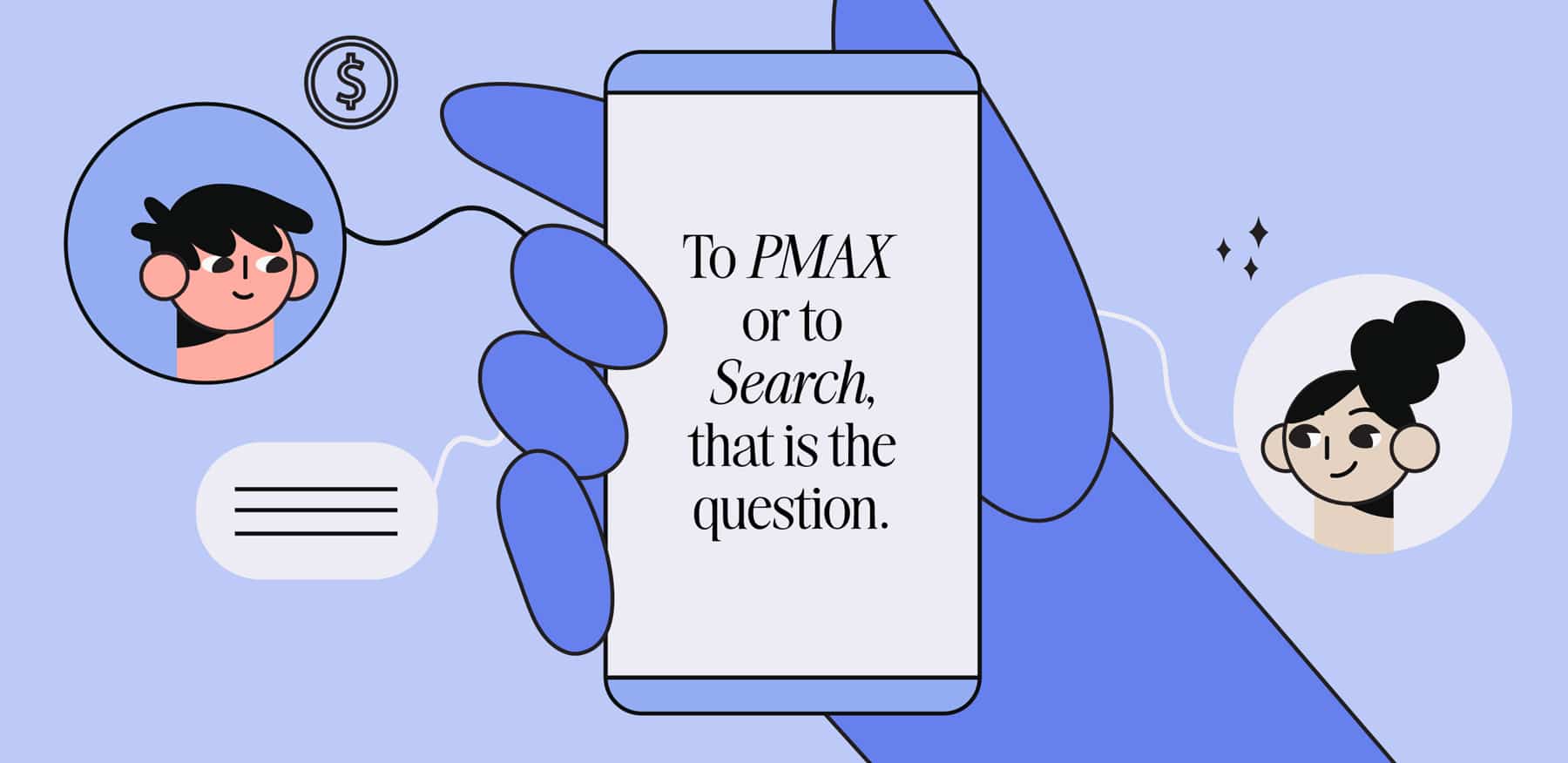Since its launch in 2022, no campaign type has been as hotly contested as Google's AI-driven multi-channel, conversion-driving engine. There's no secret that <imajery> is an avid campaign supporter, and we've driven powerful results.
Simply, Performance Max trades improved performance for less control.
How strong it performs typically depends on the strength of assets provided, to name a few:
- Conversion Data (Purchases or qualified leads)
- Creatives (Visuals & Ad Copy)
- Product feed
- Website
- Audience Signals
While this automation brings tremendous potential, it also introduces challenges that many marketers have had to navigate:
- Lead Gen saw spam & poor lead quality at launch
- Ecom brands noticed minimal incrementality as PMAX honed in on "easy" conversions (i.e. brand terms)
- Lack of transparency in reporting the cause of strong performance (search terms, placements, creatives, targeting) left advertisers frustrated and without actionable answers to their leaders.
Enter scrutiny and distrust, but Google has listened to advertisers and provided solutions, such as increased search term reporting and asset reporting. We're certain more will come as Google continues to innovate its AI-driven product.
Let's get back to the task at hand. Performance Max against Google's other ad products:
- Search
- Standard Shopping
- Demand Gen
Performance Max vs. Search

Performance Max vs. Standard Shopping

Recommendation: PMAX for most scenarios
The shopping comparison is particularly relevant for ecommerce businesses deciding how to allocate their product advertising budget. In late 2024, a significant development occurred where performance max would no longer have priority over standard shopping campaigns but would be determined by ad rank, similar to search.
That being said, PMAX still has a few key advantages over standard shopping, especially when it comes to machine learning and AI-driven performance.
The case for PMAX
- AI-driven product delivery across multiple platforms
- Multi-channel approach reaches customers at all stages
- Automated bidding optimizes for conversion value
- Simplified campaign management
- Access to additional inventory beyond Shopping (YouTube, Display, Search)
The case for Standard Shopping
- Product-level bids and control
- Increased audience controls
- Transparent reporting on product performance
- Easier to optimize underperforming products
- More control over budget allocation
Performance Max vs. Demand Gen

Recommendation: Both, with caveats:
- Ecom: Advantage PMAX
- Travel: Advantage Demand Gen
- Low Budget: PMAX only
Demand Gen focuses primarily on driving building pipeline (aka demand generation 😉 ) through YouTube, Gmail and Discover, while Performance Max typically has a much more direct measurement to conversions. Experienced performance marketers benchmark their Demand Gen efforts against other social campaigns (Meta, Pinterest, TikTok) to evaluate efficiency.
PMAX Strengths
- AI optimization for conversion-focused goals (sales & qualified leads)
- Broad reach across Google's properties
- Automated creative optimization
- Limited reporting per asset type
- Particularly effective for ecommerce with product feeds due to Shopping delivery
Demand Gen Strengths
- Granular targeting capabilities
- Channel delivery controls
- Greater control over creative messaging
- Strong at driving pipeline conversions (add to cart, lead acquisition)
- Particularly effective for travel and hospitality brands
2025 introduced a considerable win for advertisers, as Demand Gen (finally) introduced channel controls, allowing advertisers to opt out of YouTube, Gmail, Discover or Display placements
Why No Performance Max vs. Display Comparison?
Recommendation: PMAX.
While Display still has relevancy among specific sectors, Performance Max has outperformed it overwhelmingly. Additionally, due to the typically poor-quality traffic generated via the Display network, advertisers tend to limit Performance Max's ability to serve display ads via the Content Suitability controls.
Advertisers with large budgets and diminishing returns across PMAX, Search, and Demand Gen should test display, but they may also be better suited to explore DSPs or programmatic to help them drive stronger demand generation and, ultimately, incremental sales.
Performance Max Reference Chart
Use the below to help guide your campaign launch strategy & as a helpful cheat sheet:

Performance Max vs. The Rest - No Clear Winner?
The classic answer is "it depends". Advertisers are spoiled with a richness of campaign options in 2025. PMAX as a single solution may help brands reach their goals in 2025, but it likely won't be the optimal choice. Budget, objectives, conversion volume and an openness to experimentation are key factors in deciding on your Google Ads strategy through 2025.
Looking back at 2023, our blog covering five key learnings on Performance Max showcases how much PMAX has changed in 2025. We expect it to continue to innovate and help advertisers see success in 2025 and beyond.
Still stuck on deciding on your optimal choice? Contact <imajery> for a free audit request today, and let's discuss how we can help your business grow.
Author

Director of Performance Marketing
Interested in working with Us?
We'd love to hear from you!
